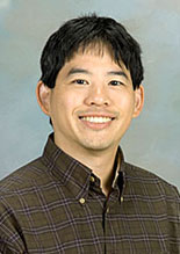
Jeffrey Chang
Associate Professor
The University of Texas Health Science Center at Houston
McGovern Medical School
Department of Integrative Biology and Pharmacology
Our lab deciphers cell signaling programs. Briefly, receptors in the cell membrane initiate cascades of reactions (pathways) that ultimately change the expression of genes. While cellular pathways are often thought of as independent and linear entities, the reality is that there is significant crosstalk among them. Indeed, the dense interconnections among signaling molecules exhibit a network structure.
The complexity of the cell signaling network provides it the capacity to produce organisms like ourselves (a good thing) as well as diseases that are difficult to manage (a bad thing). Therefore, a challenge is to explain how the network operates in normal circumstances, and how it is rewired in disease. Specifically, we wish to understand how the propagation of cell cycle signals becomes altered in cancer.
Projects/Techniques: Our research program can be grouped into three cores:
1. We are dissecting the structure of signaling cascades, focusing on the Ras network. Ras controls numerous tumorigenic processes through multiple downstream effectors. To better understand the structure of Ras signaling, we are developing strategies to dissect Ras activities into discrete subcomponents called modules, represented by gene expression profiles. We have previously shown that these modules link to disease. We now wish to identify the genes that drive each module, and investigate how they may form the basis of a rational strategy for selecting clinical treatments.
2. We are also decoding combinatorial transcriptional regulatory programs. Here, we focus on E2F, a family of transcriptional factors that regulate a range of activities through interactions with cofactors. E2F1 has a unique ability to regulate both cell cycle progression and apoptosis, processes whose decoupling is a fundamental step in the development of cancer. To better understand this, we are investigating the combinatorial interactions that underlie this transcriptional program, and how alterations can lead to the uncontrolled proliferation seen in cancer.
3. Lastly, we are developing infrastructure to distribute our computational algorithms. Each of our projects contains a computational component, and an important aspect of our work is to make our methods available. We have previously developed the GATHER website for analysis of gene sets, and are now developing a platform SIGNATURE for the analysis of oncogenic pathways.
Across our investigations, we use genomics to reveal the simple fundamental units that constitute complex biological phenotypes (such as the workings of a cancer cell). We use human cell culture as a model and leverage a range of techniques including bioinformatics, molecular biology, and biochemistry.
McGovern Medical School Faculty
Education & Training
Ph.D. - Stanford University - 2004







